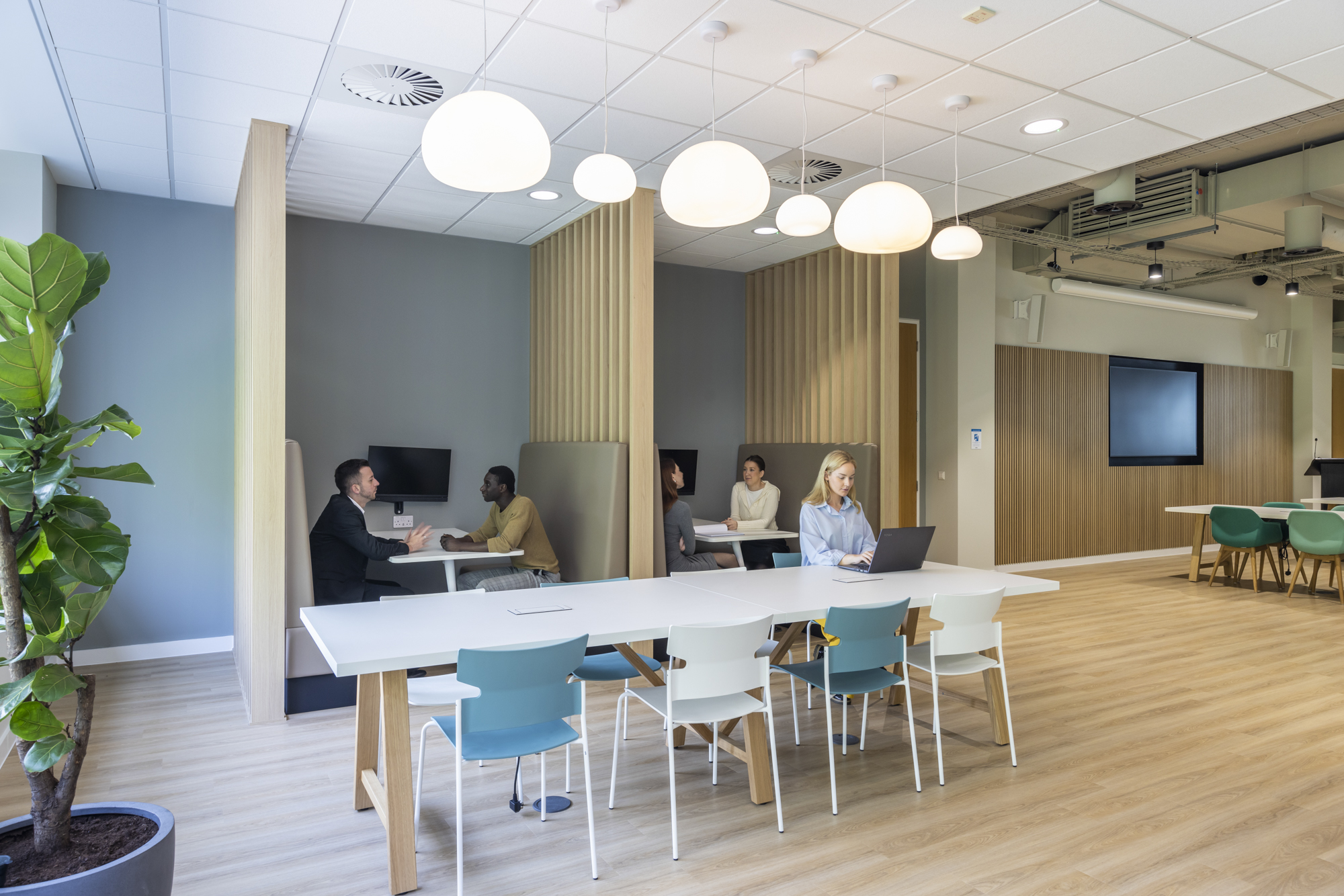A vibrant workplace is a space that naturally draws people together, fostering collaboration, creativity, and productivity. Thoughtful design plays a crucial role in achieving this and it's important to consider just what effects your workspace is having on your staff. Recent data shows that office workers spend approximately 42% of their time collaborating with others, emphasising the importance of providing a workspace that support such interactions.

Activity-based working is a workplace strategy that allows employees to choose the most suitable environment for their tasks, rather than being assigned to a specific space. This more flexible approach has been shown to improve both productivity and job satisfaction by creating both a sense of autonomy and comfort.
Open and flexible layouts encourage interaction and collaboration, whilst quiet zones provide areas for focus when needed. Multi-functional spaces help create a workplace that adapts to diverse work styles, promoting both teamwork and independent thinking. Breakout areas, lounges, and shared workstations provide opportunities for spontaneous discussions and idea-sharing, strengthening connections between employees. It is important to recognise what your team value and tailor the workspace to suit. Ultimately, if you provide the workspaces they need, they will be drawn to the office, creating the 'buzz' that is needed in a vibrant workplace.


However it is not just about the furniture and look and feel. Access to natural light and views can improve overall happiness and well-being by as much as 78%, with 70% of employees reporting enhanced work performance as a direct result. Colours and materials also play a big part in thoughtful design, and must reflect the space type. As identified by our in-house design team in their 2025 design trends article, baked earth and nature-inspired tones mixed with energizing pops of colour boost creativity and focus.
In a recent project, colours were used to distinguish between different working style areas - focus areas were a calming green, whilst collaboration areas were evocative yellow. Not only did this give visual identity to the spaces but it supports the activity-based working model.

Smart technology integration plays a crucial part in eliminating frustrating and enabling effective collaboration. All workspaces must be suitably equipped with the relevant tools that may be needed to complete tasks there.

.webp)
.webp)
.webp)
.webp)
.webp)
Woodhouse specialises in designing and building workplaces thatdraw people together, fostering an atmosphere of energy, creativity, and success that goes beyond the physical design of a workspace.